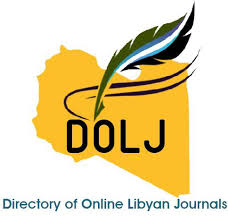Impact of insulin pump therapy on glycemic control , and body mass index on Type 1 diabetes mellitus, Tripoli Libya.
DOI:
https://doi.org/10.54361/ljmr15.1.03Keywords:
Insulin pump therapy, Type 1 diabetes mellitus, HbA1C, Body mass index( BMI).Abstract
Background: Diabetes mellitus is a chronic disease characterized by hyperglycemia that leads after many years to chronic micro vascular and macro vascular complications .Type 1 diabetes is a life- threatening chronic condition requiring continuous and life-long management that can be stressful for patients and their caregivers. Objectives is to evaluate the effectiveness of insulin pump therapy on glycemic control , and body mass index in Type 1 DM. Patients and Method: this is retrospectively studied the profiles of 73patients were on insulin pump therapy (28 males and 45 females) attending insulin pump clinic at the National Diabetes& Endocrinology center in Tripoli, Libya, from the period of first January 2014 to last December 2017. Data collected included demographic, clinical,HBA1C level ,and body mass index before, at six months, and after one year of nsulin pump therapy use.Results:61.5% were females ;mean age of patients was 29.08± 8.68 years . The mean duration of diabetes was 11.14±6.54 years. 50.7% of them were students, 83.6% were University students. The most of patients , 91.8% have no complications of diabetes. The mean HbA1C values improved from 8.29 ± 1.55 at initiation of the insulin pump therapy, to 7.27 ± 1.08 at the end of 6 months ,and to 7.35 ± 1.30 at the end of one year, with p value of 0.000. Conclusion: also The Mean body weight has no change from the start of therapy to the end of one year study (from 25.07 ± 4.54 at start to 25.18 ± 4.74 at end of 6 months to 26 ± 5.14 at end of study with p value 0.000. the impact of insulin pump therapy was positive in maintaining a good glycemic control in most of participants, and unchanged in the body mass index.
Downloads
References
leonard MJ,Reeves GD(2001) Continuous subcutaneous insulin infusion:a comprehensive review of insulin pump therapy .Arch intern Med19:2293-2300,.
Davies AG,Baun JD(1988). A decade of insulin infusion pumps .Arch Dis Child 63:329-332
Mecklenburg R ,benson J, Becker N ,Brazel P ,Fredlund P , Metz R , Nielson R , Saner C ,Steenrod W (1982).clinical use of the insulin infusion pump in 100 patients with type 1 diabetes . N Engl J Med 307 : 513-518 .
Diabetes Control and Complications Trial Research Group.(1993). The effect of intensive treatment of diabetes on the development and progression of long-term complications in insulin- dependent diabetes mellitus.NEngl J Med 329:977–86.
UK Prospective Diabetes Study (UKPDS) Group.(1998). Intensive blood glucose control with sulphonylureas or insulin compared with conventional treatment and risk of complications in patients with type 2 diabetes (UKPDS33). Lancet 352:837–53.
Pickup J, Keen H.(2002). Continuous subcutaneous insulin infusion at 25 years: evidence base for the expanding use of insulin pump therapy in type 1 diabetes. Diabetes Care 25:593–8.
Nielsen S, Kain D, Szudzik E, Dhindsa S, Garg R, DandonaP. (2005).Use of continuous 31:843–8
Faten B.R, Nadia A, Wesal H, Nour A, Nadia B. G.(2016). First Libyan Experience with Insulin Pump Therapy: Impact on Glycemic Control and Patients Satisfaction.Ibnosina Journal of Medicine and Biomedical Sciences · November 8(6) :264 -270.
Bergenstal RM, Tamborlane WV, Ahmann A, Buse JB, Dailey G, Davis SN,(2010).for the Star 3 Study Group; Effectiveness of sensor augmented insulin pump therapy in type1 diabetes; New Engl J Med 363(4):311-20.
Wainstein J, Metzger M, Boaz M, Minuchin O, Cohen Y, Yaffe A, Yerushalmy Y, et al.(2005).Insulin pump therapy vs. multiple daily injections in obese type 2 diabetic patients.Diabet Med 22:1037–46.
Ahern JA, Boland EA, Doane R, Ahern JJ, Rose P, Vincent M,Tamborlane WV.(2002). Insulin pump therapy in pediatrics: a therapeuticalternative to safely lower HbA1C levels across all agegroups. Pediatric Diabetes 3:10–5.
Plotnick LP, Clark LM, Brancati FL, Erlinger T.(2003). Safety andeffectiveness of insulin pump therapy in children and adolescentswith type 1 diabetes. Diabetes Care 26:1142–6.
American Association of Diabetes Educators.(2003). Education forcontinuous subcutaneous infusion pump users. Diabetes Educ29:97–9. American Diabetes Association.(2004).Continuous subcutaneousinsulin infusion. Diabetes Care 27(Suppl 1):S110.11.. Insulin pump therapy: situations and solutions.
Lippincotts Prim Care Pract1997;1:519–26.12. deWeerdt I, Visser AP, Kok G, van der Veen EA. Determinantsof active self-care behavior of insulin treated patients with diabetes:implications for diabetes education. SocSci Med 1999;30:605–15.
Bott U, Jorgens V, Grusser M, Bender R, Mühlhauser I, BergerM.(1994). Predictors of glycemic control in type 1 diabetic patientsafter participation in an intensifiedtreatment and teaching program.Diabet Med 11:362–71
Reda E, Von Reitzenstein A, Dunn P.(2007). Metabolic control withinsulin pump therapy: the Waikato experience. N Z Med J 120:2401–12.
Downloads
Published
Issue
Section
License
Copyright (c) 2021 Bahlul Ben Masaud, Darin meeteig, Khawla ameed, Najwi mudallal, Salsabil Keshlaf, Enas azzabi, Ibtihal shagrouni, Walid shekiry, Sanira Nowara, Ayman Derbash, Hamida Benhamed (Author)

This work is licensed under a Creative Commons Attribution-NonCommercial-NoDerivatives 4.0 International License.
Open Access Policy
Libyan journal of medical Research (LJMR).is an open journal, therefore there are no fees required for downloading any publication from the journal website by authors, readers, and institution.
The journal applies the license of CC BY (a Creative Commons Attribution 4.0 International license). This license allows authors to keep ownership f the copyright of their papers. But this license permits any user to download , print out, extract, reuse, archive, and distribute the article, so long as appropriate credit is given to the authors and the source of the work.
The license ensures that the article will be available as widely as possible and that the article can be included in any scientific archive.
Editorial Policy
The publication of an article in a peer reviewed journal is an essential model for Libyan journal of medical Research (LJMR). It is necessary to agree upon standards of expected ethical behavior for all parties involved in the act of publishing: the author, the journal editorial, the peer reviewer and the publisher.
Any manuscript or substantial parts of it, submitted to the journal must not be under consideration by any other journal. In general, the manuscript should not have already been published in any journal or other citable form, although it may have been deposited on a preprint server. Authors are required to ensure that no material submitted as part of a manuscript infringes existing copyrights, or the rights of a third party.
Authorship Policy
The manuscript authorship should be limited to those who have made a significant contribution and intellectual input to the research submitted to the journal, including design, performance, interpretation of the reported study, and writing the manuscript. All those who have made significant contributions should be listed as co-authors.
Others who have participated in certain substantive aspects of the manuscript but without intellectual input should only be recognized in the acknowledgements section of the manuscript. Also, one of the authors should be selected as the corresponding author to communicate with the journal and approve the final version of the manuscript for publication in the LJMR.
Peer-review Policy
- All the manuscripts submitted to LJMR will be subjected to the double-blinded peer-review process;
- The manuscript will be reviewed by two suitable experts in the respective subject area.
- Reports of all the reviewers will be considered while deciding on acceptance/revision or rejection of a manuscript.
- Editor-In-Chief will make the final decision, based on the reviewer’s comments.
- Editor-In-Chief can ask one or more advisory board members for their suggestions upon a manuscript, before making the final decision.
- Associate editor and review editors provide administrative support to maintain the integrity of the peer-review process.
- In case, authors challenge the editor’s negative decision with suitable arguments, the manuscript can be sent to one more reviewer and the final decision will be made based upon his recommendations.













